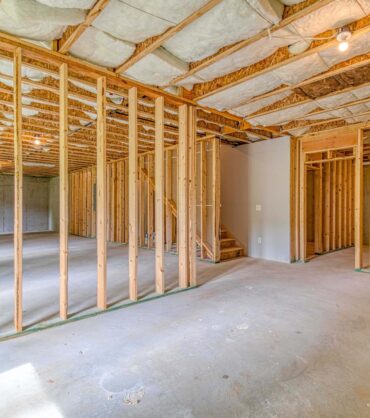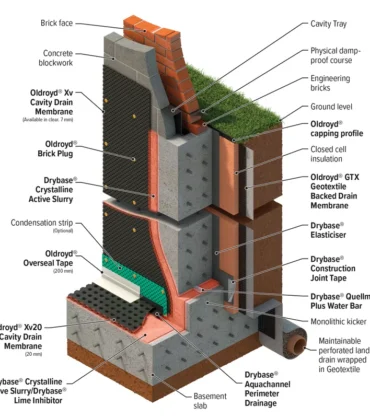Why Regular Basement Inspections Are Essential for Homeowners
Learn the importance of regular basement inspections for homeowners. Understand potential risks, identify water damage signs, prevent structural issues, and ensure a safe living environment.
Understanding the potential risks
When it comes to homeownership, understanding the potential risks associated with your property is crucial. One of the most common areas where risks can arise is the basement. From water damage to mold growth, there are a number of issues that can compromise the safety and structural integrity of this important part of your home.
First and foremost, regular basement inspections are essential for identifying any potential risks before they become major problems. By proactively assessing the condition of your basement, you can catch issues early and address them before they escalate into serious structural or health hazards.
In addition to structural issues, there are also health risks associated with a neglected basement. Mold and mildew can thrive in damp, dark environments, and prolonged exposure to these substances can lead to a range of respiratory issues and other health problems. By understanding the potential risks of mold growth in your basement, you can take steps to prevent it from becoming a problem.
Furthermore, an overlooked basement can impact the overall indoor air quality of your home. Poor air quality can lead to a range of health issues for you and your family, so it’s crucial to prioritize regular inspections and maintenance of this area.
In conclusion, the potential risks associated with a neglected basement are numerous, ranging from structural issues to health hazards. It’s essential for homeowners to prioritize regular inspections and maintenance to mitigate these risks and ensure a safe living environment for themselves and their families.
Identifying signs of water damage
The Importance of Regular Basement Inspections for Homeowners
It is crucial for homeowners to regularly inspect their basement for any signs of water damage, as it can lead to serious structural issues if left unchecked. One of the most obvious signs of water damage is the presence of water stains or discoloration on the walls or floors. These can indicate a leak or seepage from the outside, and should be addressed immediately to prevent further damage. Additionally, a musty or damp odor in the basement can also be a sign of water damage, as it may indicate the presence of mold or mildew.
Another common sign of water damage is the appearance of efflorescence, which is a white, powdery substance that forms on concrete or masonry surfaces. This can occur when water evaporates and leaves behind salt deposits, and is often a sign of ongoing moisture issues. Homeowners should also keep an eye out for any visible cracks or deterioration in the basement walls or floors, as these can be indicative of water infiltration.
Furthermore, pooling water or standing water in the basement should be immediately addressed, as it can lead to further damage and create a breeding ground for mold and bacteria. Homeowners should also inspect their basement for any signs of rust or corrosion on metal fixtures or appliances, as this can be a result of prolonged exposure to water.
In addition to visual signs of water damage, homeowners should also pay attention to any changes in their indoor air quality. Excessive humidity or moisture in the basement can lead to mold growth, which can in turn negatively impact the air quality in the home. It is important for homeowners to take proactive measures to identify and address any signs of water damage in their basement in order to maintain a safe and healthy living environment.
| Signs of Water Damage | Actions to Take |
|---|---|
| Water stains or discoloration | Address any leaks or seepage immediately |
| Musty or damp odor | Check for mold or mildew and address the source of moisture |
| Efflorescence | Address ongoing moisture issues to prevent further damage |
| Visible cracks or deterioration | Address water infiltration and repair any structural issues |
| Pooling or standing water | Immediately remove and address the source of water accumulation |
Preventing structural issues
As a homeowner, it is crucial to be proactive in preventing structural issues in your home, particularly in the basement. Regular inspections of the basement can help identify any early warning signs of potential problems, such as cracks in the walls or foundation, water seepage, or uneven floors.
By taking the time to regularly inspect and maintain the structural integrity of your basement, you can prevent more serious and costly issues from developing in the future. Additionally, addressing minor problems early on can help avoid potential safety hazards and damage to the rest of your home.
One way to stay on top of preventing structural issues in your basement is to create a checklist for regular inspections. This can include checking for any signs of water damage, such as damp or musty odors, mold growth, or discolored walls. It can also involve inspecting the foundation for any cracks or shifts, as well as examining the flooring and walls for any signs of damage or instability.
Another important aspect of preventing structural issues in the basement is to address any drainage issues around the exterior of your home. Poor drainage can lead to water accumulation around the foundation, increasing the risk of water seepage and structural damage. Taking steps to ensure proper drainage, such as installing gutters, downspouts, and grading the soil away from the foundation, can help prevent these issues from occurring.
In summary, regular inspections and maintenance of your basement are essential in preventing structural issues in your home. By being proactive and addressing any potential problems early on, you can help maintain the structural integrity of your home and ensure a safe and stable living environment for you and your family.
Maintaining indoor air quality
The Importance of Regular Basement Inspections for Homeowners
One of the key aspects of maintaining a healthy home environment is to focus on maintaining indoor air quality. Poor indoor air quality can lead to a range of health issues, from allergies and respiratory problems to headaches and fatigue. It is important for homeowners to take proactive steps to ensure that the air inside their homes is clean and free from harmful pollutants.
One way to maintain indoor air quality is to regularly clean and maintain the HVAC system. This includes changing air filters on a regular basis, scheduling routine maintenance checks, and ensuring that the system is running efficiently. A well-maintained HVAC system can help to filter out pollutants and improve the overall air quality inside the home.
Another important step in maintaining indoor air quality is to control moisture levels within the home. Excess moisture can lead to the growth of mold and mildew, which can release spores into the air and negatively impact air quality. Homeowners should regularly inspect for water leaks, ensure proper ventilation in areas such as bathrooms and kitchens, and use dehumidifiers if necessary to control moisture levels.
Using natural cleaning products and reducing the use of synthetic chemicals can also contribute to maintaining indoor air quality. Harsh cleaning products can release volatile organic compounds (VOCs) into the air, which can have negative health effects. By opting for natural, non-toxic alternatives, homeowners can help to keep the air inside their homes clean and safe to breathe.
In conclusion, maintaining indoor air quality is crucial for creating a healthy and safe living environment. By taking proactive steps to clean and maintain the HVAC system, control moisture levels, and use natural cleaning products, homeowners can ensure that the air inside their homes is clean and free from harmful pollutants.
Ensuring a safe living environment
As a homeowner, it is crucial to prioritize the safety and well-being of your family by ensuring a safe living environment. A safe living environment encompasses various aspects of household maintenance, including structural integrity, indoor air quality, and the prevention of potential risks. Regular inspections and maintenance checks are essential in upholding the safety of your home.
One of the most important aspects of ensuring a safe living environment is identifying signs of water damage. Water damage can lead to mold growth, rotting of wood, and structural instability. As a result, it is important to thoroughly inspect basements, walls, and ceilings for any signs of water damage, such as discoloration, peeling paint, or musty odors.
Furthermore, homeowners should prioritize preventing structural issues in their homes in order to maintain a safe living environment. Structural issues, such as cracks in the foundation or walls, can compromise the safety of a home. Regular inspections by a professional can help identify and address any potential structural issues before they escalate into major problems.
In addition to structural concerns, maintaining indoor air quality is also vital for a safe living environment. Poor indoor air quality can result in various health issues, including respiratory problems and allergies. Homeowners should regularly inspect and maintain HVAC systems, change air filters, and address any mold or mildew issues to ensure clean and healthy indoor air.
Finally, it is important for homeowners to be mindful of potential risks within the home. Whether it’s trip hazards, electrical issues, or fire hazards, taking proactive measures to address potential risks is essential for ensuring a safe living environment. This may include installing smoke detectors, keeping pathways clear of clutter, and regularly checking for faulty electrical outlets or wiring.



![[GetPaidStock.com]-680786795b816 [GetPaidStock.com]-680786795b816](https://dmvwp.com/wp-content/uploads/2025/04/GetPaidStock.com-680786795b816-370x418.jpg)

![[GetPaidStock.com]-682c400c87c15 [GetPaidStock.com]-682c400c87c15](https://dmvwp.com/wp-content/uploads/2025/04/GetPaidStock.com-682c400c87c15-370x418.jpg)

![[GetPaidStock.com]-682c413fa898e [GetPaidStock.com]-682c413fa898e](https://dmvwp.com/wp-content/uploads/2025/03/GetPaidStock.com-682c413fa898e-370x418.jpg)